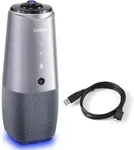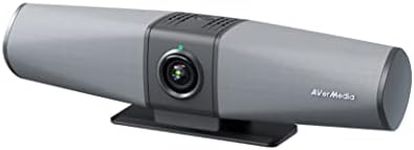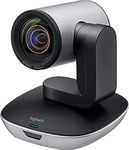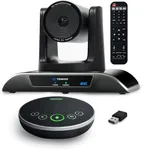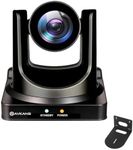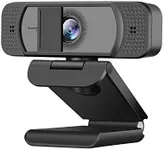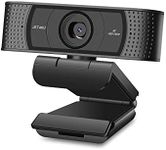Buying Guide for the Best Conference Webcam
Choosing the right conference webcam is essential for ensuring clear and professional communication during virtual meetings. The right webcam can make a significant difference in video and audio quality, which can impact the overall effectiveness of your meetings. When selecting a conference webcam, consider the following key specifications to find the best fit for your needs.ResolutionResolution refers to the clarity and detail of the video captured by the webcam. It is measured in pixels, with common resolutions being 720p (HD), 1080p (Full HD), and 4K (Ultra HD). Higher resolution webcams provide clearer and more detailed images, which is important for professional presentations and meetings. If you need high-quality video for large conference rooms or detailed presentations, a 1080p or 4K webcam is recommended. For smaller meetings or casual use, a 720p webcam may suffice.
Frame RateFrame rate, measured in frames per second (fps), determines how smooth the video appears. Common frame rates are 30fps and 60fps. A higher frame rate results in smoother video, which is important for dynamic presentations or when there is a lot of movement. For most conference calls, 30fps is adequate, but if you want the smoothest possible video, especially for fast-paced environments, consider a webcam with 60fps.
Field of View (FOV)Field of View (FOV) indicates how much of the room the webcam can capture. It is measured in degrees, with typical FOVs ranging from 60 to 120 degrees. A wider FOV is useful for capturing more participants in a single frame, making it ideal for larger conference rooms. For individual use or small group meetings, a narrower FOV is sufficient. Choose a webcam with a FOV that matches the size of your meeting space and the number of participants.
AutofocusAutofocus ensures that the webcam automatically adjusts to keep the image sharp and clear, even if the subject moves. This feature is important for maintaining professional video quality without manual adjustments. If your meetings involve a lot of movement or if you frequently switch between different speakers, a webcam with reliable autofocus is beneficial. For static setups where the camera position and subject distance remain constant, autofocus may be less critical.
Low Light PerformanceLow light performance refers to the webcam's ability to produce clear video in dim lighting conditions. This is important if your conference room or workspace has poor lighting. Webcams with good low light performance use advanced sensors and technology to enhance image quality in low light. If you often have meetings in environments with variable or low lighting, prioritize a webcam with strong low light performance. For well-lit spaces, this feature is less crucial.
Microphone QualityMicrophone quality is crucial for clear audio during conference calls. Many webcams come with built-in microphones, but their quality can vary. Look for webcams with noise-canceling microphones that reduce background noise and enhance voice clarity. If audio quality is a top priority, consider a webcam with high-quality built-in microphones or plan to use an external microphone. For smaller meetings or quieter environments, standard built-in microphones may be sufficient.
CompatibilityCompatibility refers to the webcam's ability to work with different operating systems and conferencing software. Ensure that the webcam you choose is compatible with your computer's operating system (Windows, macOS, etc.) and the video conferencing platforms you use (Zoom, Microsoft Teams, etc.). Most modern webcams are plug-and-play and support a wide range of systems, but it's always good to double-check compatibility to avoid any issues during setup.
Mounting OptionsMounting options determine how and where you can position the webcam. Common mounting options include clips for attaching to a monitor, tripods, and wall mounts. Consider where you will be using the webcam and choose one with mounting options that suit your setup. For flexible positioning and stability, a webcam with multiple mounting options is ideal. If you have a fixed setup, a simple clip-on mount may be all you need.


